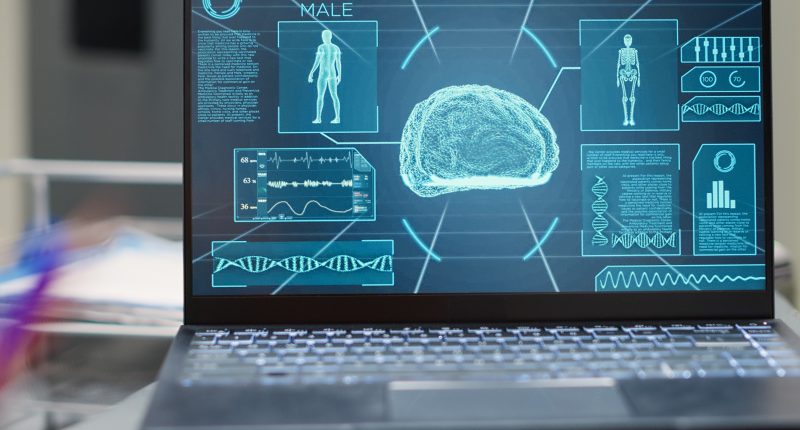Healthcare organizations are built on vast amounts of data, which requires them to rise to the challenge to effectively manage and have it at their disposal. From electronic health records (EHRs) to genomic data, clinical trial information, and wearable device data, the sheer volume and diversity of data sources can make the task complex.
This is where Retrieval Augmented Generation (RAG) technology emerges as a game-changer, offering a powerful solution to unlock the full potential of this wealth of data and drive better patient outcomes. That is why companies like K2view make it possible for healthcare companies to build, test, and deploy data products so that they can accelerate their business with data that is relevant to their efforts and ensure improved operational efficiency and patient care.
The Elusive Goal for Healthcare Companies: Reliable Responses from Generative AI
As healthcare organizations strive to leverage the capabilities of generative AI, a significant hurdle remains: Generating accurate and reliable responses based on private information and data
While technologies like machine translation and abstractive summarization have shown promise, providing trustworthy responses that incorporate an organization’s proprietary data is a feat in itself.
Generative AI models, such as Large Language Models (LLMs), are typically trained on publicly available data, which can lead to outdated or incomplete information. When you incorporate the high cost and time involved in retraining these models, healthcare organizations are faced with the hardship to keep pace with their constantly evolving data landscape.
Retrieval Augmented Generation: A Paradigm Shift in Generative AI
RAG is an emerging generative AI technology that addresses these limitations. As described in the 2020 publication “Retrieval-Augmented Generation for Knowledge-Intensive Tasks” by Facebook AI Research (now Meta AI), RAG is a “general-purpose fine-tuning recipe” designed to connect LLMs with an organization’s internal data sources.
RAG technology essentially augments an LLM with fresh, trusted data retrieved from authoritative internal knowledge bases and enterprise systems. By seamlessly integrating and contextualizing information from multiple sources, RAG enables healthcare organizations to generate more informed and reliable responses, elevating the effectiveness and trust of their generative AI applications.
The RAG Architecture: A Powerful Data Retrieval Framework
The RAG architecture is a comprehensive framework that facilitates the retrieval and integration of data from various sources, enhancing the accuracy and relevance of the LLM’s responses. The process begins with a user prompt, which triggers the data retrieval model to access the organization’s internal sources, including structured data from enterprise systems and unstructured data from knowledge bases.
The retrieval model then crafts an enriched prompt by augmenting the user’s original prompt with additional contextual information from the retrieved data sources. This enriched prompt is passed as input to the generation model (LLM API), which uses the augmented context to generate a more accurate and relevant response, delivered back to the user in near real-time.
RAG in Healthcare and Its Benefits
The applications of RAG technology in the healthcare sector are vast and transformative. Here are a few examples that illustrate how this technology is revolutionizing patient care:
Clinical Decision Support Systems (CDSS)
Retrieval Augmented Generation technology can enhance Clinical Decision Support Systems (CDSS) by providing healthcare professionals with up-to-date and comprehensive information from various data sources, including medical literature, clinical guidelines, and patient records. With this knowledge, clinicians can make more informed decisions, leading to improved diagnostic accuracy, personalized treatment plans, and better patient outcomes.
Precision Medicine and Genomics
RAG technology plays a crucial role in the field of precision medicine by facilitating the integration and analysis of genomic data with other relevant clinical data sources. By extracting and synthesizing information from genomic databases, medical literature, and patient records, RAG technology can help identify potential genetic markers, predict disease risk, and develop personalized treatment strategies tailored to individual patients.
Clinical Trials and Drug Development
RAG technology can streamline the clinical trial process and accelerate drug development by efficiently retrieving and synthesizing data from various sources, including scientific publications, regulatory guidelines, and patient data. This enables researchers to identify potential drug candidates, evaluate safety and efficacy, and optimize clinical trial design, ultimately leading to faster and more effective drug development processes.
Beyond these examples, RAG technology offers numerous benefits to healthcare organizations, including:
- Quicker time to value and lower costs compared to training an LLM from scratch.
- Personalized user interactions via chatbots and customer service agents, tailored to specific patient data and preferences.
- Improved user trust through accurate, fresh, and relevant information.
- Elevated user experience and reduced customer care costs by increasing first-contact resolution rates.
Overcoming Challenges: A Roadmap for Successful RAG Implementation
While RAG technology presents a powerful solution, its implementation is not without challenges. Healthcare organizations must ensure that their internal knowledge bases and enterprise systems are RAG-ready, with accessible, searchable, and high-quality data. Additionally, sophisticated prompt engineering capabilities are required to inject relevant data into the RAG LLM in a way that generates the most accurate responses.
To address these challenges, industry analysts recommend a phased approach, starting with a pilot use case where business value can be clearly measured
Organizations should also classify their data as structured, semi-structured, or unstructured to determine the best handling and risk mitigation strategies. Metadata also plays a crucial role in providing context for the RAG deployment and enabling technology selection.
The Future of Healthcare Data with RAG Technology
In today’s current markets, it’s become even more critical to prioritize effective data management and analysis solutions to ensure company success. By partnering with RAG technology providers and leveraging the power of this cutting-edge approach, healthcare organizations can take a significant step forward in improving patient outcomes, revolutionizing the way data is utilized in the sector.
With RAG technology, healthcare organizations can unlock the true potential of their data assets, enabling more informed decision-making, personalized treatment strategies, and ultimately, improved patient outcomes. The future of healthcare data management has arrived, and Retrieval Augmented Generation technology is leading the way.





